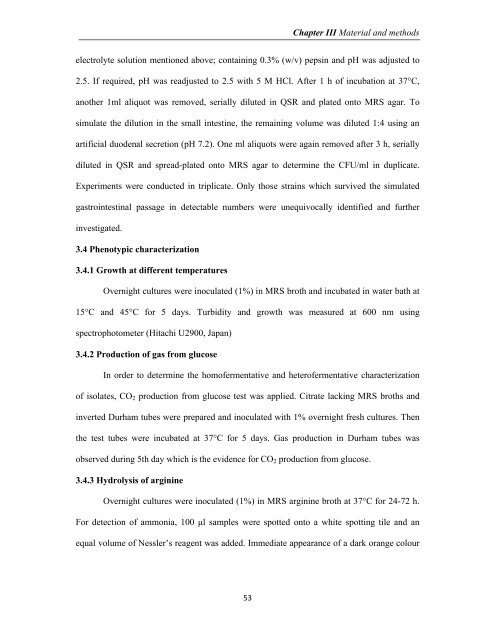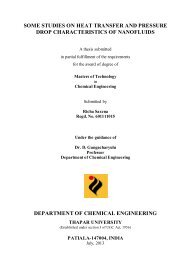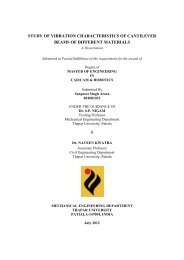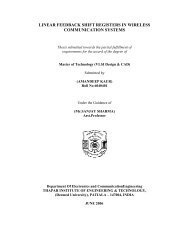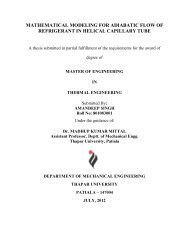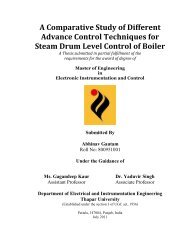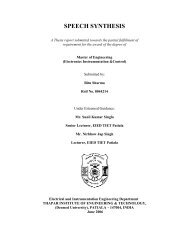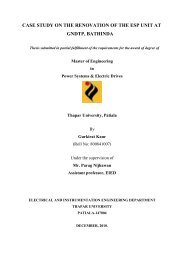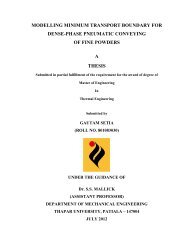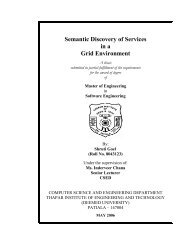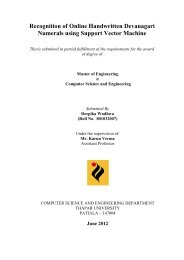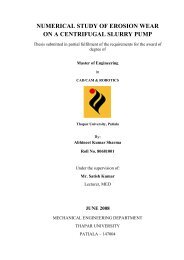from indigenous fermented foods and human gut ... - Thapar University
from indigenous fermented foods and human gut ... - Thapar University
from indigenous fermented foods and human gut ... - Thapar University
Create successful ePaper yourself
Turn your PDF publications into a flip-book with our unique Google optimized e-Paper software.
53<br />
Chapter III Material <strong>and</strong> methods<br />
electrolyte solution mentioned above; containing 0.3% (w/v) pepsin <strong>and</strong> pH was adjusted to<br />
2.5. If required, pH was readjusted to 2.5 with 5 M HCl. After 1 h of incubation at 37°C,<br />
another 1ml aliquot was removed, serially diluted in QSR <strong>and</strong> plated onto MRS agar. To<br />
simulate the dilution in the small intestine, the remaining volume was diluted 1:4 using an<br />
artificial duodenal secretion (pH 7.2). One ml aliquots were again removed after 3 h, serially<br />
diluted in QSR <strong>and</strong> spread-plated onto MRS agar to determine the CFU/ml in duplicate.<br />
Experiments were conducted in triplicate. Only those strains which survived the simulated<br />
gastrointestinal passage in detectable numbers were unequivocally identified <strong>and</strong> further<br />
investigated.<br />
3.4 Phenotypic characterization<br />
3.4.1 Growth at different temperatures<br />
Overnight cultures were inoculated (1%) in MRS broth <strong>and</strong> incubated in water bath at<br />
15°C <strong>and</strong> 45°C for 5 days. Turbidity <strong>and</strong> growth was measured at 600 nm using<br />
spectrophotometer (Hitachi U2900, Japan)<br />
3.4.2 Production of gas <strong>from</strong> glucose<br />
In order to determine the homofermentative <strong>and</strong> heterofermentative characterization<br />
of isolates, CO2 production <strong>from</strong> glucose test was applied. Citrate lacking MRS broths <strong>and</strong><br />
inverted Durham tubes were prepared <strong>and</strong> inoculated with 1% overnight fresh cultures. Then<br />
the test tubes were incubated at 37°C for 5 days. Gas production in Durham tubes was<br />
observed during 5th day which is the evidence for CO2 production <strong>from</strong> glucose.<br />
3.4.3 Hydrolysis of arginine<br />
Overnight cultures were inoculated (1%) in MRS arginine broth at 37°C for 24-72 h.<br />
For detection of ammonia, 100 μl samples were spotted onto a white spotting tile <strong>and</strong> an<br />
equal volume of Nessler’s reagent was added. Immediate appearance of a dark orange colour


